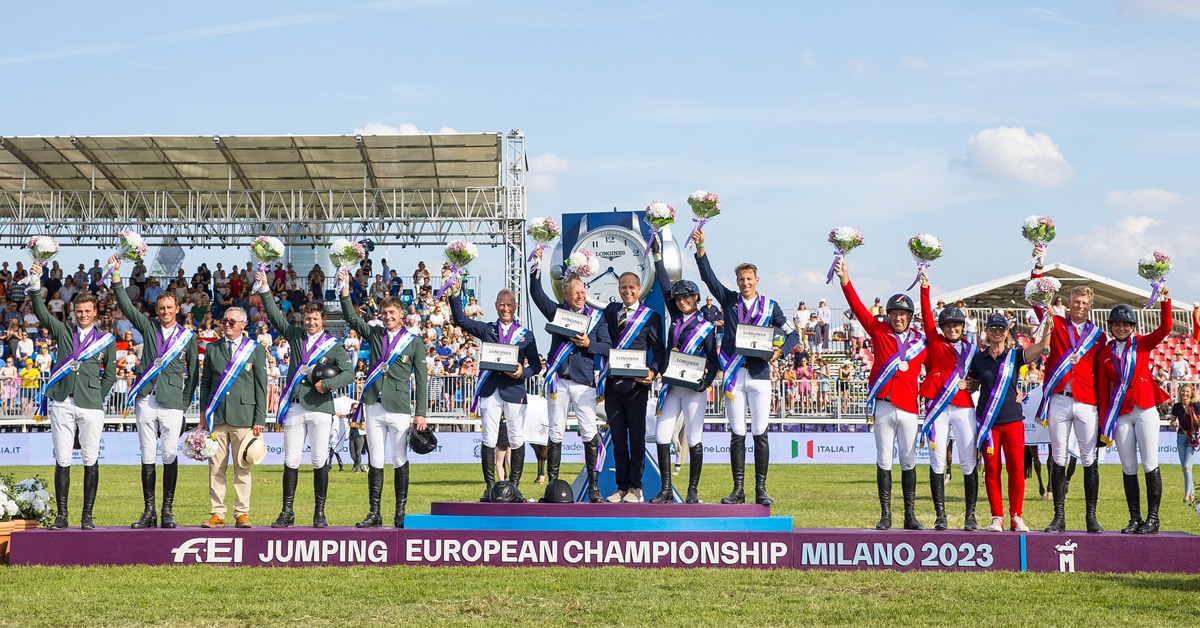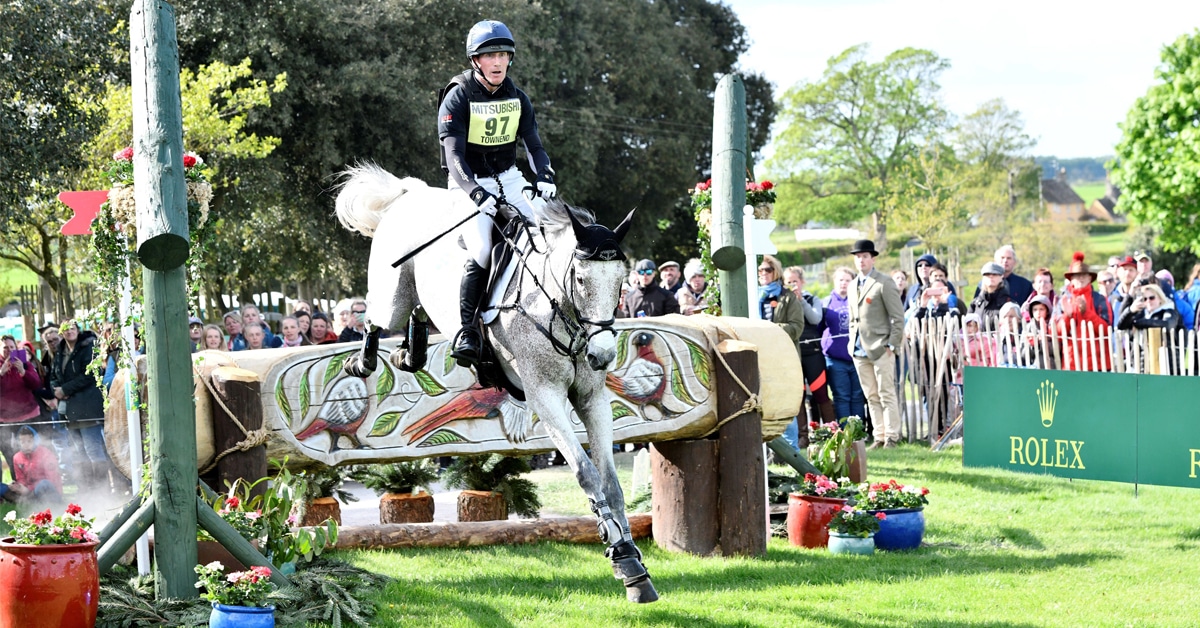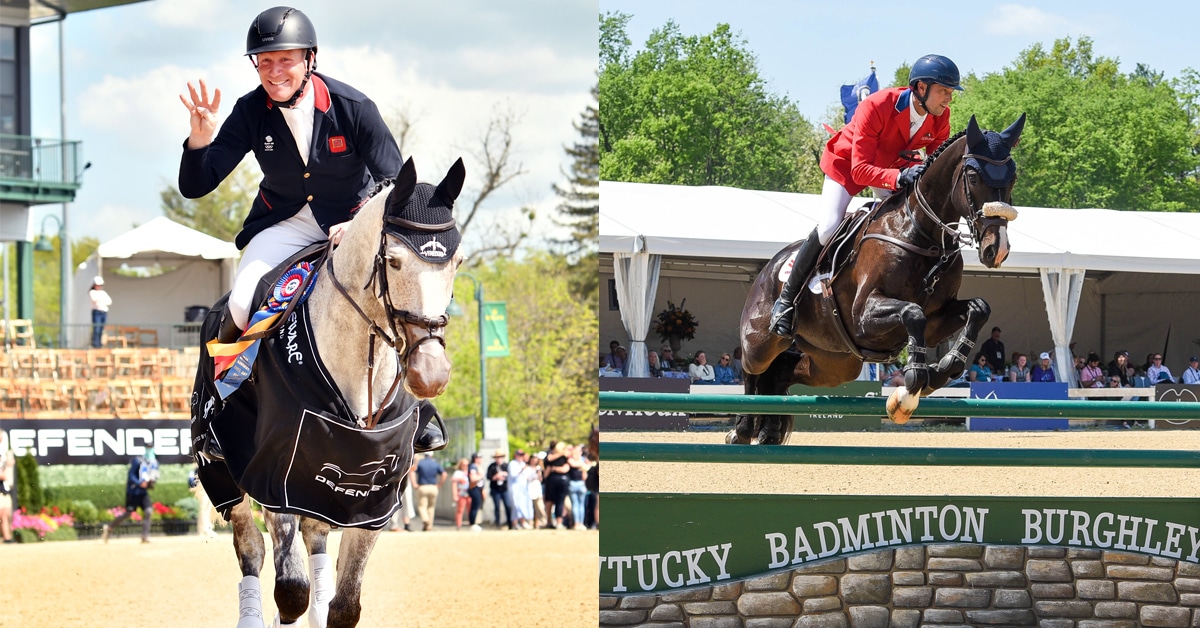The 1972 Olympic Three Day Events competition was held at Riem, just outside Munich, offering the most superb facilities to both riders and horses in the event. It will be difficult for Canada to match these facilities in 1976. There were 18 teams competing and one individual rider from Sweden (who, incidentally, took the individual bronze medal). Canada was represented by Mr. Robin Hahn riding Mr. Errol Fisher’s Lord Jim, Mr. Clint Banbury on his own horse, Paladin, Mr. Jim Henry on Miss Esther Peachey’s Harper and Miss Wendy Irving on High Wind.
The dressage tests were performed over two days in the stadium at Riem before large crowds. Clint Banbury was the first to perform for Canada and achieved a score of 70, which proved to be just below the average score. Paladin did an accurate test but was unsteady in his halts.
Wendy Irving rode probably the best test she has ever done on High Wind and got a score of 61. Harper and Jim Henry managed to get through the test without serious mistakes but Harper was very tense and unsteady with his head. His score was 78.67.
Robin Hahn and Lord Jim had a very smooth performance and apart from one break in the two track movement, the test was good. His score was 60.33 (Bear in mind that the lowest score is the best in Three Day Event Dressage as points are converted into penalties).
There were several excellent tests. Mark Phillips and Great Ovation of Great Britain, twice winners of Badminton, achieved a score of 36.33. Bill Roycroft of Australia scored 36 with Warrathoola, and Herr Horst Karsten on Sioux from Germany scored 33.
After the dressage, Canada stood 12th as a team but only 10 marks separated the middle range of teams from 6th place to 12th.
The cross country course was not particularly big but there were several tricky fences and it was very long. The whole course was maximum distance of round 20 miles. The first Roads and Trails was short (2 miles) leading to a beautiful steeplechase course with 12 fences over 2 ¼ miles. The second Roads and Trails was long at 10 miles, leading into 5 ½ miles Cross Country.
Clint Banbury and Paladin were first to go for Canada and was well within Maximum Bonus Time when he fell on landing after fence number 9 on the steeplechase. Clint was up very quickly and finished the steeplechase, still with good bonus for time. The horse appeared to be alright and came in from the second Roads and Trails in good shape. However, during the 10 minutes compulsory halt, before the cross country, the horse stiffened up a little but set off well. This horse has only fallen once in three years of competition, so, when he fell at fence 2, 4 and 9 it was obvious that he wasn’t feeling his usual self. He had undoubtedly hurt himself in the first fall; the fences were well within his capabilities. This was our first serious blow. However, with three more to go we still had a chance to finish with a team. Wendy and “Highwind” went second and jumped very well on the steeplechase and came in with very good pulse and respiration to the start of the Cross County. The Team vet reported him in very good shape. On the Cross Country he jumped well and very strongly up to fence 23 when he pecked on landing and went down. He had another fall at fence 29 but continued to finish in good shape with a fairly slow time. By this time the score board was beginning to show an enormous amount of falls and refusals; some teams were already eliminated. Jim Henry and “Harper” did a good steeplechase in good time. He hit fence 9 very hard but stood up and got away with it. His pulse and respiration were also good and he started the Cross Country very fresh. He went very well, but for a nasty moment at fence 23, which was causing most of the trouble. It was a downhill approach to a rail and ditch jump onto a bank, then off the bank over a rail with a drop and a ditch. The bank was 14 feet wide on top, too short for a stride and too long for a “no stride”. Most people angled it to give more room. Harper gave it his full attention. He jumped over the first rail into the ditch, which was six feet wide, out of the ditch onto the bank, took a short stride and jumped out clean. Only one other did this and he didn’t make it! It wasn’t what anyone would do from choice but Jim said “Once he tried it I sat still and let him sort it out.” Our luck didn’t hold, however, when with only three fences to go, he fell at a very easy crossed rails. Nevertheless, he finished full of running and we had two horses round with one to go; certainly no worse than some other teams.
Before our last horse started we knew that Great Britain and the United States were doing very well, as expected. They too had had their troubles. Great Britain’s first two both had a refusal and their third horse “Great Ovation” had had two falls and two refusals. The U.S.A. had Kevin Freeman around clean but the other three had either falls or refusals or both. Mexico had all four riders eliminated, Holland had three eliminated, Argentina, three eliminated with Bulgaria and Hungary out with two or three eliminated.
So, with Robin Hahn, our most experienced rider, to go as the last horse on the course, we all waited for news of the steeplechase. He jumped well with near Maximum Bonus. He came into the Cross Country not sweating at all and a pulse of only 44 and normal respiration. Dr. Chassels again reported him in the best shape of any horse on our team. He set off well but our hopes were very short lived when he took off too soon at fence 4 and fell very badly. Robin rolled clear but the horse knocked himself out and was not able to continue. The horse was taken to the Olympic Horse Hospital and at the time of writing was making good progress, although suffered from a bad concussion.
Our two that finished, jumped the next day. Harper and Jim Henry had a beautiful round to finish in 32nd place overall and Wendy and “High Wind” with two fences down in 44th position. This is out of 73 competitors.
The rest of the competition was still very close except for the Team Gold Medal. The Brits had, as they did in Mexico, 50 points or more in hand. The equivalent of 5 fences down. They didn’t need them, as Cornishman V and Mary Gorden Watson jumped clear. Cornish Gold and Bridget Parker had one down. Great Ovation jumped clear. This gave Richard Mead four fences to have down for the Team Gold Medal. He didn’t need them either; indeed, he had 14 marks to spare for the Individual Medal. With his usual cool style, he jumped a beautiful clear, to the roars of the crowd and British supporters. The Team Silver Medal was not in too much contention, and was won by The United States.
The Bronze Medal was taken by the German Team. With only one fence between the Germans and the Australians, it was sad to see the anguished face of the young Austalia, Richard Sands, when he had knocked down THAT fence.
The continued dominance in this sport by the British team is quite overwhelming. They replaced one of their Horse/Rider combinations at the last minute and the replacement finished in 10th spot. They had a further spare with them of equal calibre and left several behind who could have given equally good performances. They have a strong junior Three Day Event team currently competing throughout Europe. It is impossible for Canada to hope to compete at this level without gaining a similar depth of horses, riders, and experience. Why are the British so outstanding in this field? Several reasons come to mind.
English horses and riders have a lot of exposure to riding cross country through so many small events, point-to-point racing and fox hunting. There are numerous events held throughout the country for the entire show season and since the distance from one end of England to the other is little more than from Toronto to Montreal, travelling to the events is neither expensive nor time consuming. The British have forwarded a team to all World, European and Olympic competitions., so that their riders and horses have gained the valuable international experience. Their own top championships in England such as Badminton and Burghley are used by other nations as an opportunity for Olympic calibre competition. The other countries who did well at the Olympics were mounted, for the most part, on British or Irish horses with this background and experience. Perhaps this is the answer if Canada is not able to generate considerably more interest in the form of Events, horses, riders, money and international competition … to buy our three day events horses, trained and conditions in Great Britian. However, this becomes expensive and with so many good young horses available in Canada, we should be able to produce our own team. Also, the British are not going to sell us horses we can beat them on.
The Russians are confronted with the same problems of distances as we are. The Americans and Australian overcame this problem by shipping to England in the spring and competing on the circuit of events there. Unfortunately, not many of our riders are in a financial position to do this event if all of the horses expenses were paid. Unless they are independently wealthy, true amateurs have jobs to hold down.
As usual, now that the Games are over ‘experts’ come crawling out from underneath their cocoons and are currently barraging the coach, riders and supporters of the Three Day team with remarks and advice on how they could have improved their position. We are always so quick to criticize. Perhaps, this time, Canadian officials should take a long hard look at where they went wrong over the past four years, before they are so quick to blame the team itself. The experience gained at Munich was invaluable to the riders and an opportunity to competed regularly in Canada, in the United States and later on, in Europe should afford a much more solid an experienced team for Montreal in 1976.
The Canadian horses and riders, hampered by bad luck and inexperience, performed fairly well when all is considered. The two horses that did finish, Harper and High Wind, were in very good condition, superior to many other finishers. Their 32nd and 44th placings out of the 76 starter are commendable.
More from Eventing:





